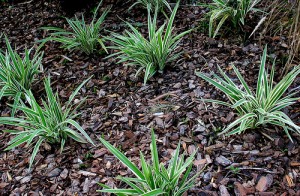When you are doing your spring cleanup to prepare your garden for the coming growing season, take the time to put down some new mulch. This practice helps your plants stay healthy and strong. It also makes your yard more visually appealing.
Some Benefits of Mulch
When you put wood chips, compost, or other common mulching materials into your garden beds, your plants benefit greatly. This layer above the soil insulates the plants better from temperature fluctuations that could freeze the roots or evaporate the water present. Weeds have a harder time pushing through to the surface and growing properly. It is also aesthetically pleasing and adds a uniform color to the base of your plantings.
Two Reasons to Mulch Every Year:
1)Mulch is often made of natural organic materials. Over time as they are exposed to air, water and organisms, it begins to break down. If it is not replenished yearly, it will become thinner and you will lose the beneficial properties.
2)Since the mulch has been through the elements and decomposition, it can look old and weathered. A fresh layer will reinvigorate your planting beds and accent the colors of your foliage and flowers.
How Much Should You Use?
Two to three inches is a good general guideline to use when applying mulch in your landscape. This is enough to cover the soil up properly and add insulation. You can figure out how much you need by multiplying the length and width of your garden (using feet) times how deep you want the layer to be, converted to feet. Three inches would be .25 feet, for example. The resulting number is how many cubic yards are needed to cover the entire area.
A warning for trees and shrubs: Make sure you leave at least six inches of space around the trunk that is free of mulch. If you have it closer, this can invite pests and diseases to invade the plant. It can also keep the bark moist, leading to rot.
Image by csessums under a Flickr Creative Commons Attribution-ShareAlike License



